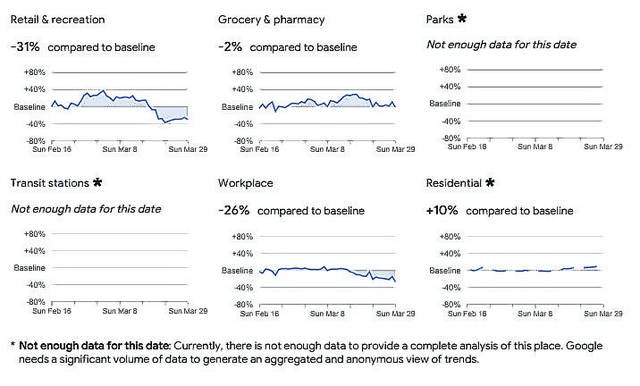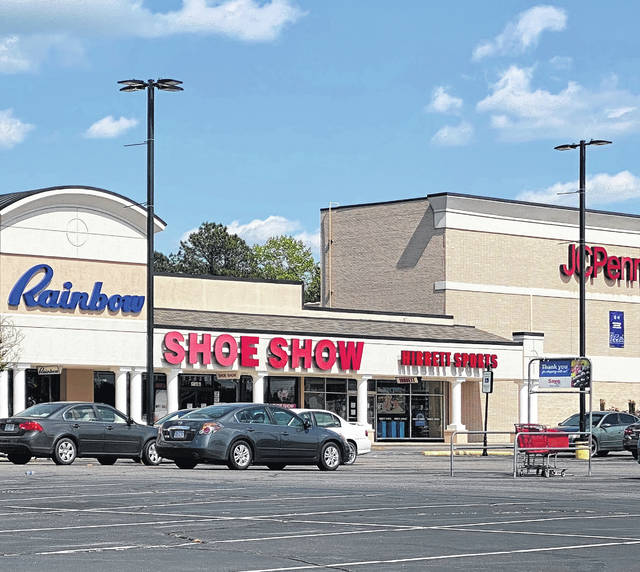ROCKINGHAM — Through its COVID-19 Community Mobility Reports, Google is giving local public health officials and community members an idea of how much there travel habits have changed in recent weeks.
Using location data it already collects from cell phones to assist in areas such as advertising and marketing, Google published reports that show where individuals around the world are traveling, to, and how often they go to those places.
Google started publishing the reports on April 3. Initially, reports on 131 countries and regions around the world were published. Richmond County was one of those areas.
“The reports use aggregated, anonymized data to chart movement trends over time by geography, across different high-level categories of places such as retail and recreation, groceries and pharmacies, parks, transit stations, workplaces, and residential,” a release from Google reads.
Richmond County’s data — which is accurate as of March 29 —shows a 31% decline in visits to retail and recreation facilities from Feb. 16 to March 29. In that same time frame, travel to workplaces decreased by 26%. Visits to grocery stores and pharmacies dipped by just two percent. Google isn’t publishing exact numbers of visits, just percentages.
In Richmond County’s case, there wasn’t enough data to track visits to parks, transit stations and residences.
Nearby counties had similar outcomes. Scotland County saw a 25% drop in retail and recreation travel, a 30-percent drop in workplace visits and a four-percent decrease in grocery store and pharmacy visits. Robeson County had a 27% drop in the retail and recreation category, a 26% drop in workplace travel and a decline in visits to transit stations, although not enough data was gathered to fully analyze that category.
Richmond County Manager Bryan Land said Monday that the county is so uncertain about future tax revenues that no departments will receive budget increases in the new fiscal year. Land added that, adding together losses in sales tax revenues and losses from continuing essential functions, the county is expected to lose between $525,000 to $550,000 in revenues each month that the government is not fully operational.
As a whole, North Carolina saw a 40-percent decrease in retail and recreation travel, a 51-percent decrease in travel to transit stations, a 35-percent dip in travel to workplaces, a 15-percent dip in trips to grocery stores and pharmacies, a 13-percent increase in travel to parks, and a 10-percent increase in travel to places of residence.
According to Google, the mobility reports aren’t meant to be used as a reference for medical or personal travel purposes.
“In addition to other resources public health officials might have, we hope these reports will help support decisions about how to manage the COVID-19 pandemic,” a Google release reads. “For example, this information could help officials understand changes in essential trips that can shape recommendations on business hours or inform delivery service offerings. Similarly, persistent visits to transportation hubs might indicate the need to add additional buses or trains in order to allow people who need to travel room to spread out for social distancing.”
Google prioritized privacy when putting the reports together.
“For these reports, we use differential privacy, which adds artificial noise to our datasets enabling high quality results without identifying any individual person,” the release reads.


